7 Best Image Optimization Tricks to Speed up eCommerce Websites
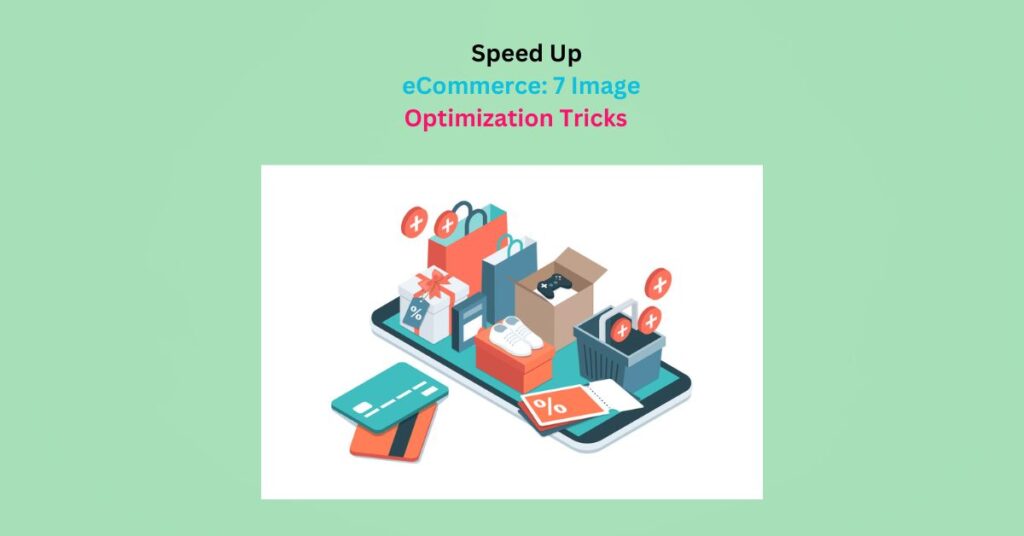
Various tricks to speed up your eCommerce site can make the difference between a sale and a bounce.
“Patience isn’t a virtue when scouting for products from eCommerce stores,” said an anonymous online shopper. And speed is the currency in any digital marketplace.
A one-second delay in page loading time leads to a 7% decrease in conversions.
According to a study by Aberdeen Group, a slow site also shrinks customer satisfaction by 16%.
eCommerce sites have lots of visuals. Shunning the best image optimization practices makes your website feel like a slow-motion replay.
Instead, optimize your images to speed up eCommerce visibility and deliver a seamless shopping experience. Read on to discover top image optimization tricks for speeding up an eCommerce website:
Why Is Speed Crucial for an eCommerce Site?
To speed up e-commerce and boost conversion rates, prioritizing website performance can hardly be overestimated.
Website performance and speed are at the core of making your eCommerce store high conversions.
Any online store owner looking to keep competition at bay can’t get away with slow page loading times. Whichever eCommerce platform, Shopify or WooCommerce, visuals are bread-and-butter.
Think of speed as the magic fuel that revs up your eCommerce site’s SEO rankings. Here’s why store speed test isn’t just about loading times:
1. Search Engine Optimization (SEO) Impact
Page speed is a ranking factor for mobile searches, according to Google’s 2018 Speed Update.
Think of it as Google saying, “We’re not sending users to slow-loading pit stops; we want them to reach their destination in the fast lane.”
The correlation between page speed and search engine rankings is tightly choreographed.
Picture Google as the dance judge and your eCommerce website’s speed as its rhythm.
The chances of a mobile site visitor bouncing increase by 123% as page load time moves from one to 10 seconds.
And since Google adopted a mobile-first approach to indexing, it would be detrimental to your SEO if the mobile site is dragging its feet.
2. User Experience and Conversion Rates
Loading speed and a seamless user experience work in sync.
Google’s Core Web Vitals, introduced in 2020, emphasize the role of user-centric metrics in improving a visitor’s experience.
These metrics include Largest Contentful Paint (LCP), First Input Delay (FID), and Cumulative Layout Shift (CLS).
LCP, for instance, measures the time it takes for the largest content element (a large text block, video, or image) visible within the view load to load.
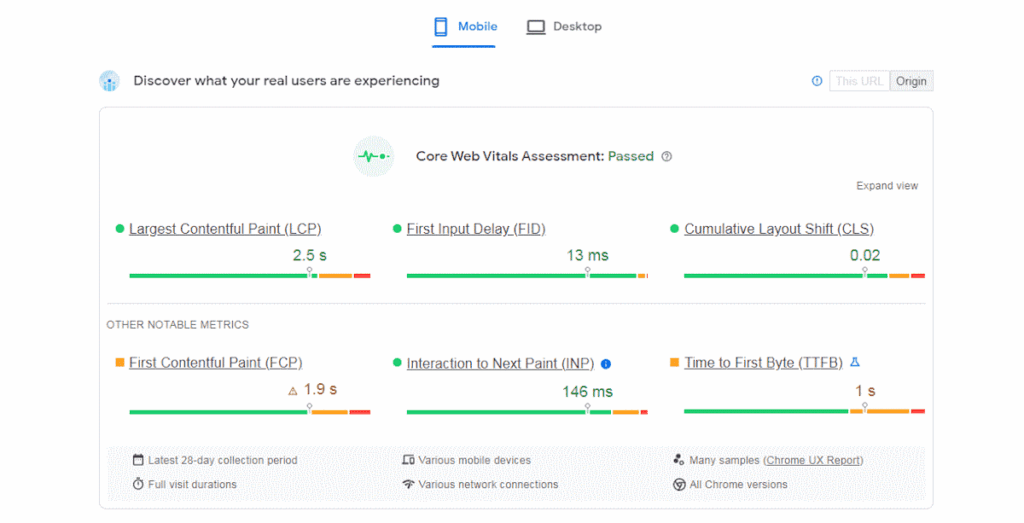
Overall, a good LCP is considered to be under 2.5 seconds. Most of all, Google suggests that 53% of mobile visitors abandon a page if it takes more than three seconds to load.
And since patience is a rare commodity, Kissmetrics found that 47% of consumers expect a product page to load in 2 seconds or less.
3. Mobile Responsiveness and Adaptability
To scale eCommerce conversions, your mobile checkout process should be a sprint, not a turtle race.
First things first—let’s talk numbers.
- Mobile devices account for 50% of web page views
- In some regions, this skyrockets to over 70%
- There are over 3.8 smartphone users worldwide
The eCommerce mobile experience isn’t just a segment but makes up a huge chunk of your online audience.
Google uses the Interaction to Next Paint (INP) metric to measure your site’s mobile responsiveness. The user-centric metric checks how fast a page reacts once you take an action.
An INP of 200 milliseconds or less means your mobile pages respond quickly.

If your mobile site is responsive, most potential online shoppers are always ready to seal the deal.
7 Image Optimization Hacks to Speed Up eCommerce Websites
Visuals are the lifeblood of an eCommerce site, as they convey a brand’s identity, aesthetics, and product details.
Their sheer size and resolution, however, impact page loading times. Here are 7 easy image optimization fixes to help speed up your eCommerce site:
1. Resize Images to Appropriate Dimensions
Some sections of your eCommerce site may require different sizes.
Category banners, product thumbnails, and featured product images tend to have unique dimension requirements.
If, for instance, you have a WooCommerce store, resizing the product images reduces the overall file size.
The result? Faster page load times.
You’ll need a robust image optimization tool to achieve optimal dimensions for each. The ShortPixel plugin would do the job as it combines simplicity with powerful features.

You only need an API key to integrate ShortPixel with your eCommerce platform.
Once integrated, eCommerce site owners can access its compression settings. You get features like lossless or lossy compression, bulk resizing, and more.
2. Use Lazy Loading for Images
Picture this: you land on an online store, and instead of waiting for ages while all the images load, they pop up just when you’re ready to scroll.
It’s like setting the stage for a grand entrance!
Lazy loading works more like a virtual assistant for your images.
With ShortPixel, you can decide how close to the visible area an image should be before it loads.
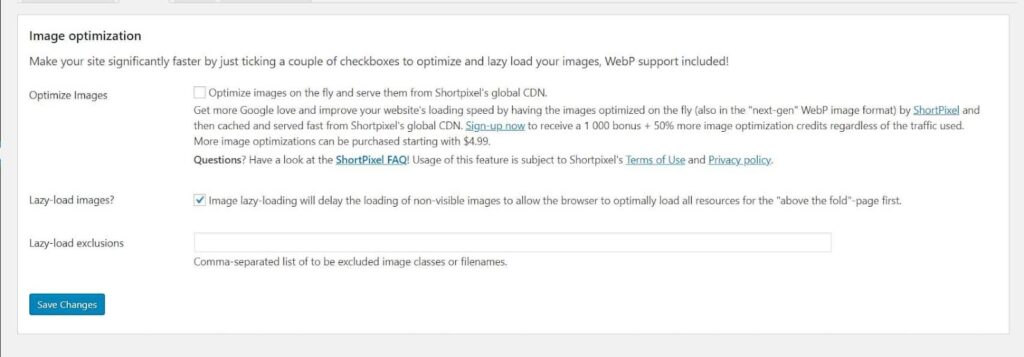
After making a few lazy loading tweaks, you can run a speed store test using tools like GTmetrix or Google PageSpeed.
Overall, lazy loading helps create a seamless and speedy experience. As a result, shoppers are more likely to stick around, browse, and, most of all, make that purchase.
3. Optimize Image File Names and Alt Text
Your product images need descriptive names. Instead of “IMG_123,” go for something like “red-high-heel-shoe.”
Optimizing image file names and alt text is like giving them a clear signpost.
Alt text describes the product image, making your visual content accessible to every potential shopper.
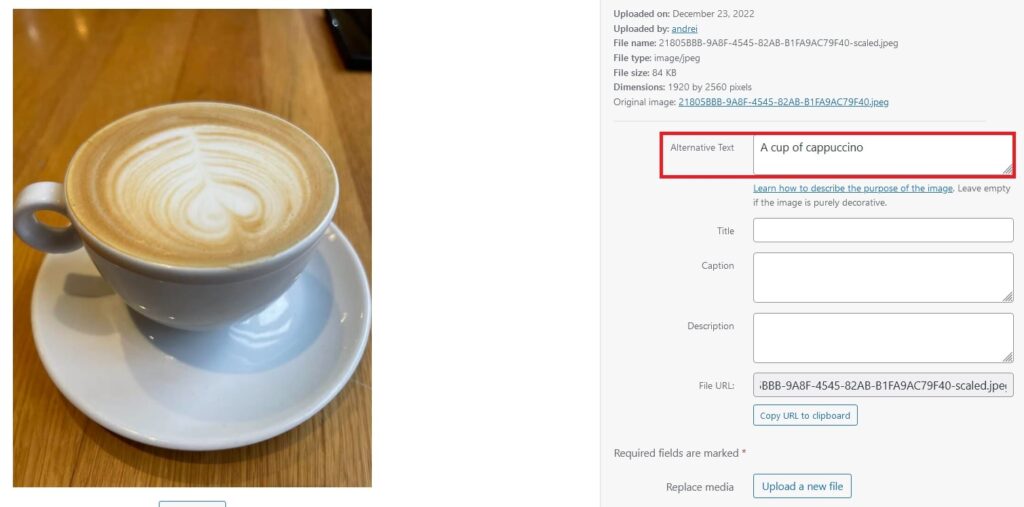
ShortPixel helps eCommerce site owners tidy up those image file names and alt text.
While it doesn’t change any metadata, the tool replaces those original bulky files with optimized ones.
4. Image Sitemaps for Search Engine Visibility
An image sitemap is the manual that guides the search engine through the gold mine of your visual content.
Using a sitemap generator on your WooCommerce store takes minutes. Here’s a video with more context on WordPress sitemaps:
Picture your eCommerce website as a city and each product image as a landmark.
The goal is to have search engines tour this city seamlessly. Search engine crawlers will know where to find and how to navigate your image content.
5. Responsive Image Design
Using a responsive UX/UI design tailors your images to fit every screen. This ensures a lightning-fast experience for every potential shopper.
Your images should seamlessly fit various screen sizes to reduce unnecessary data transfer.
With ShortPixel, an eCommerce store owner can switch to adaptive product images at the click of a button.

The adaptive images plugin ensures your online product images fit aesthetically to different screen sizes.
Adjust the quality settings for sharp and clear but not unnecessarily hefty images. Responsive images require a balance between quality and file size.
Using ShortPixel’s adaptive images plugin creates a symphony of speed and aesthetics.
6. Content Delivery Network (CDN) Integration
Why CDN, you ask?
Because when potential shoppers across the globe visit your site, the data travels a considerable distance.
Integrating your eCommerce website with a CDN helps store copies of its static files. The site’s product images and descriptions are saved on servers strategically located around the world.
ShortPixel uses a global CDN to replace images on a website with optimized, cropped, and sized images.
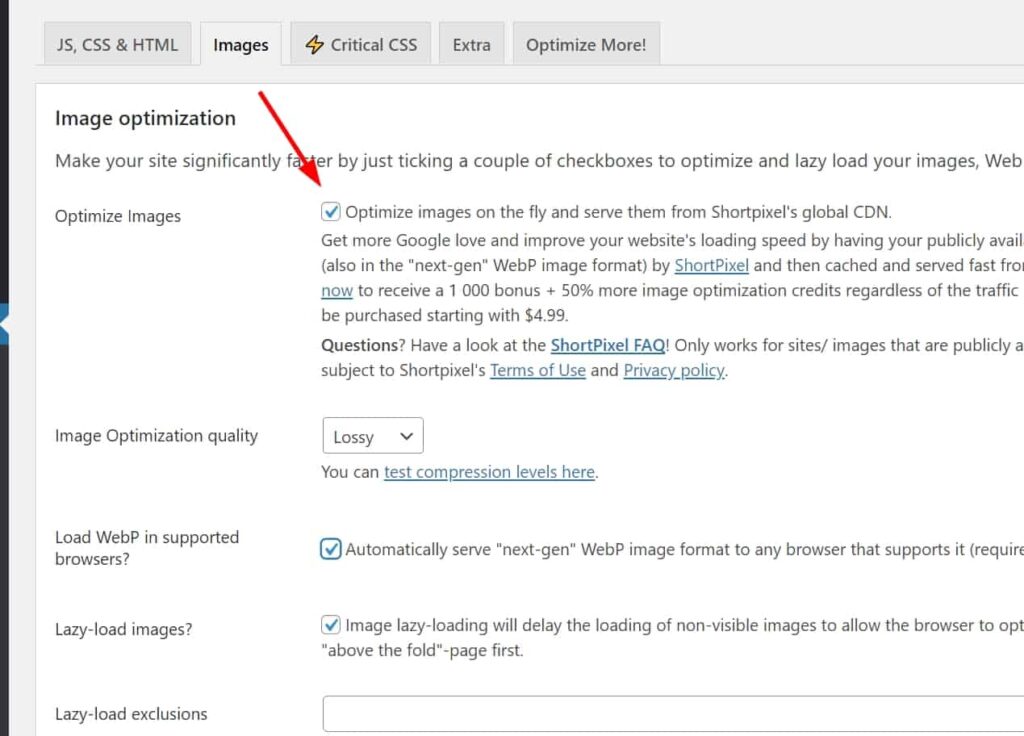
Best of all, we bill site owners a negligible fee for CDN integration.
For WordPress users rocking WooCommerce, it’s as easy as pie.
Most CDNs have plugins that seamlessly integrate with your site. Shopify users, fear not. Shopify comes with built-in CDN functionality. All you need to do is ensure it’s activated.
7. Monitor Optimization Performance
But hey, don’t just stop there! Let’s run a store speed test.
Google’s PageSpeed Insights is a great place to start. It gives you a score out of 100 and suggests improvements.
Monitoring optimization performance ensures your eCommerce store is running at peak performance.
You could use these metrics to monitor eCommerce website speed:
- Time to First Byte (TTFB): Gauges the time for a browser to receive the initial byte from a server. To optimize your eCommerce site, aim for less than 200 milliseconds.
- First Contentful Paint (FCP): Marks when meaningful content appears on the screen. A target of under 1.8 seconds is ideal.
- DOMContentLoaded: Signals when the HTML document is fully parsed and the DOM tree is ready for JavaScript. Aim for a time below 2.5 seconds.
- Fully Loaded Time: Measures the total time for the entire page to load, including all assets, with a desirable goal of under 3.5 seconds.
These metrics should give you stellar results alongside caching, image optimization, and a reliable hosting provider.
Summary
Images are the major influencers of website speed. When optimizing your eCommerce website for speed, every trick counts.
You can utilize ShortPixel’s bulk optimization tools if your eCommerce store has many product images. Automatic lossless or lossy compression and lazy loading can enhance your site’s loading speed.
Besides that, integrating a Content Delivery Network (CDN) with its adaptive images is a hack worth considering.
Building a successful online business is a cakewalk. You just need to implement these image optimization tricks and leverage ShortPixel’s functionalities.